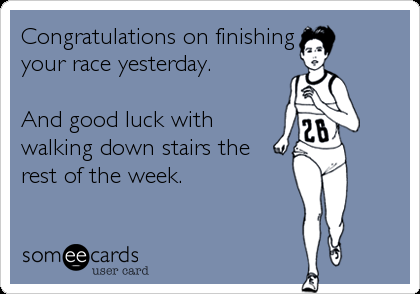We’ve all felt it at some point. Here are our 5 tips for sore muscles (DOMS).
If you have ever had that distinctive muscle pain the day after doing a really hard workout, these 5 tips are for you. That pain we feel is known as DOMS. It stands for ‘Delayed Onset Muscle Soreness’ because we always feel it worse the first few days after exercise.
The Science of DOMS
DOMS occurs more after eccentric exercises. This may not mean much to you, but we use this type of contraction every time we walk down a hill or a flight of steps. DOMS tend to concentrate at muscle-tendon junctions due to the high concentration of muscle pain receptors at these junctions. Your body responds to this damaged muscle tissue by swelling and causing muscles to feel tender. You are producing a type of white blood cell, a neutrophil, which generates oxygen radicals. These are crucial in cleaning up debris of damaged muscle tissue. Unfortunately, one side effect of this is painful inflammation lasting for up to 72 hours after.
DOMS typically increases within 24-hours after you have completed a workout and peaks between 24 and 72 hours. This is why you might not feel sore immediately after a hard workout, but the pain appears 1 or 2 days after.
Follow these steps the next time you feel sore and hopefully it will help to take the edge off your pain.
1. Get moving
The first 24-72 hours after your workout is when those muscles will be hurting the most. Don’t be afraid to use them though – gentle exercise and movement through those sore muscles will help to flush them out.
2. Eat to support your body
Make sure to drink lots of water across the day as dehydration can affect plasma levels in your blood. This can prevent energy from reaching your muscles which contributes to muscle soreness. Foods rich in antioxidants, good fats and proteins also help to reduce DOMS, here are a few examples:
– Blueberries, watermelon, kiwi fruit, pineapple
– Leafy greens
– Potatoes
– Cod, salmon
– Almonds, Brazil nuts, walnuts
– Eggs
– Cinnamon, ginger, turmeric.
3. Foam Roll/Self massage
A total of 20 minutes of foam rolling immediately after exercise and every 24 hours afterwards reduces the likelihood of sore muscles and stiffness. This form of massage stretches out your muscles and encourages blood flow to the sore spots.
4. Treat yourself to a warm bath
Heat can help with sore muscles. Lay in a warm bath for 20 minutes and let your muscles relax, or even use a warm wheat bag over the sore areas. Why not try a few Epsom Salts in the bath as well for an extra treat.
5. Get a good sleep
Try and get between 7 and 9 hours sleep for the few days after your big workout. Give your body time to rest and repair itself, and you will feel more refreshed the next day.
It isn’t all doom and gloom
As your body repairs itself, it is making you stronger and more resilient. The next time you do this same activity you will hurt less the next day, so don’t give up just because you are sore.
If you would like more scientific information here are some studies worth looking at:
The effects of massage on delayed onset muscle soreness
A review of nutritional intervention on delayed onset muscle soreness. Part I






